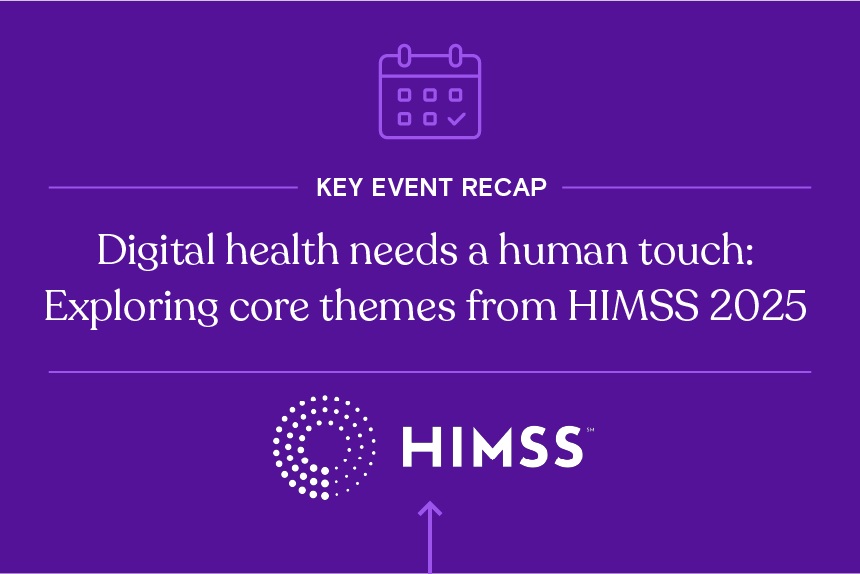EHR integration is vital for successful M&A. So why aren’t more organizations doing it?
Sep 28th, 2022

Merging with another facility can be a lifeline for many struggling healthcare organizations. However, many of these organizations miss out on the benefits of M&A—like reduced costs and enhanced quality of care—by failing to integrate their EHR systems. Moving forward, organizations will need to prioritize integration to achieve success post-M&A.
In this blog, we’ll discuss why EHR integration post-M&A is important, why it often isn’t reached, and how it can be prioritized by organizations.
Why healthcare organizations need to focus on EHR integration
One of the most-cited arguments for M&A is improved information sharing across organizations and systems. When achieved, electronic health record (EHR) integration offers a host of benefits, such as:
- Reduced information gaps for patients moving across care sites
- More efficient clinical and administrative practices through streamlined workflows
- Safe and secure management of protected health information (PHI) and other data
- Simplified scheduling process for patients
- Lowered operating costs by reducing unnecessary staffing and achieving economies of scale in expensive system maintenance
Considered together, these advantages could significantly enhance both the patient and provider experience. For providers, integrated EHR systems help them view greater amounts of patient data with ease, showing them the whole picture of patient health. When patients’ PHI is centralized, then providers can coordinate, manage, and provide patient care better, leading to more effective diagnoses and fewer medical errors.
For patients, health outcomes improve when healthcare providers efficiently collaborate across departments and practices. A merger can enhance the patient experience by increasing access to services and improving the quality of care through standardized clinical protocols, upgraded services, and more. By integrating EHR systems following M&A, providers may have an easier time treating patients and collaborating with colleagues.
How often does EHR integration actually happen?
So, we know EHR integration can help healthcare organizations optimize information sharing, but how often does this enhanced healthcare interoperability become a reality?
Unfortunately, not often. A 2019 analysis in HealthAffairs found that the majority of acquired hospitals did not switch to the vendor of the acquiring health system. Overall, the study determined three types of switching decisions by acquired hospitals:
- Acquired hospitals already use the vendor of the acquiring health system and do not switch (21%).
- Acquired hospitals switch to the vendor of the acquiring health system (35%).
- Acquired hospitals do not switch to the vendor of the acquiring health system (44%). These hospitals remain using the EHR system they had prior to M&A. Many organizations choose not to merge their EHR systems because it can be expensive and disruptive to both business and care delivery, among other reasons.
Post-acquisition hospital EHR vendor switching decisions
Fig 1. Data is from “Does Electronic Health Record Consolidation Follow Hospital Consolidation?”, Health Affairs Blog, March 7, 2019.
Why so many healthcare organizations struggle to integrate EHR systems
If EHR integration is such a critical post-M&A step, why don’t more organizations prioritize it? Well, it’s also a significant investment of time and money. Studies show that purchasing and installing EHR systems can cost a striking $15,000 to $70,000 per provider.
Changing EHR systems also requires significant training, often met with resistance from employees. Once employees are trained in one system, it takes time to adapt to and become fully proficient in a new software technology.
Further, implementing a new EHR system involves migrating, converting, and securing data. With this responsibility comes the risk of technical issues and even data breaches. In fact, data from the HHS Breach Portal shows that, in 2020, network server breaches made up about 40% of all data breaches, with the source of the attack being EMR systems 5% of the time (33 incidents).
There can even be hiccups in the integration process for entities that share the same EHR vendor. This is because most healthcare facilities have distinct workflows for clinical and administrative practices through EHR systems.
How can organizations plan for successful EHR integration?
Despite the fact that EHR integration post-M&A is a considerable endeavor, the potential benefits undoubtedly outweigh the concerns.
We know that M&A can greatly benefit healthcare organizations by improving patient care quality and lowering costs. But to ensure that they can achieve these outcomes, organizations need to actively plan for EHR integration.
Since data cannot legally migrate until an M&A deal completes, healthcare organizations would be wise to have an EHR integration plan ready to execute upon finalization. Some organizations may plan to run separate systems simultaneously until a decided date. On that date, and following any necessary tests, they can securely migrate their data. Other organizations may opt to use a third system to aggregate data from the other two systems.
It is also valuable to increase communication and secure alignment across leadership and stakeholders to ensure all groups involved understand the organizational plans during and after M&A. In particular, parties from both merging entities need to collaborate leading up to the merger date. Sometimes, seeking external guidance and consultation may help secure maximum value from the deal and deliver on promises.
If healthcare organizations plan for EHR integration as part of their M&A plan, they will be more likely to avoid an integration gap—a common reason that M&A deals fail when organizations cannot deliver promised benefits—and achieve success.
Learn more
As more hospitals and health systems merge, so will the health information technology landscape. Our healthcare commercial intelligence on M&A activity can help you keep up.
To explore more about how you can utilize Definitive Healthcare’s intelligence to create new paths to commercial success, start a free trial.




